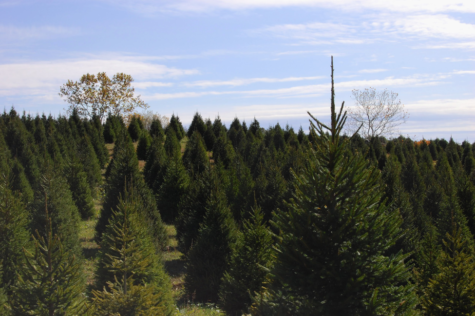Geneticists Develop Better Christmas Trees
January 5, 2018
The modern Christmas tree isn’t natural.
Almost all commercialized plants go through some form of genetic manipulation. From breeding to DNA manipulation, the modern Christmas tree is no stranger to the science of genetics.
Started by the Specialty Crop Research Initiative Grant in 2012, Christmas Tree Genetics is an organization that conducts genetic research on Christmas trees to grow the Christmas tree industry. This group combines expertise from eight individuals from six different universities to develop the best trees with a special focus on true firs, the type of trees native to the Pacific Northwest.
“The overall goal [for Christmas Tree Genetics] is to develop improved trees for Christmas tree farmers to plant in their plantations,” said Dr. Bert Cregg, a member of the research team at Christmas Tree Genetics.
Cregg is an Extension Specialist and Associate Professor of Horticulture and Forestry at Michigan State University, which means he studies how plants grow and the new scientific methods can make growing easier.
Cregg and his colleagues are working on improving the appearance Christmas trees, disease resistance, and needle retention using cross breeding. With experiments like these, Dr. Rick Bates, the leader of the Christmas Tree Genetics team and an Associate Professor of Horticulture at Penn State University, says “the goal is never truly achieved,” because there are always new improvements to be made.
With focus on fraser firs, noble firs, Turkish firs, and douglas firs, the team is “looking at making crosses between trees of different species,” according to Cregg. They are trying to “combine the best traits of one tree (e.g., growth rate) with the best traits of another tree (say, needle color).”
But according to Bates and Cregg, making these more complex trees is hard because of both the molecular genetics and the length of time it takes for a tree to be ready for harvest or reproduce.
To work around these difficulties, Cregg says they “begin to screen trees at younger ages” as well as use genetic markers to “identify trees with superior needle retention or disease resistance based on their DNA.”
According to Bates, by researching Christmas tree genetics, the team hopes to create “trees that are less expensive to produce, needing fewer fungicides, and holding their needles longer”. Cregg believes this helps the consumers as well because it provides “greater choices – more varieties of trees to choose from as well as trees with better characteristics such as fewer needles dropping on the carpet.”




